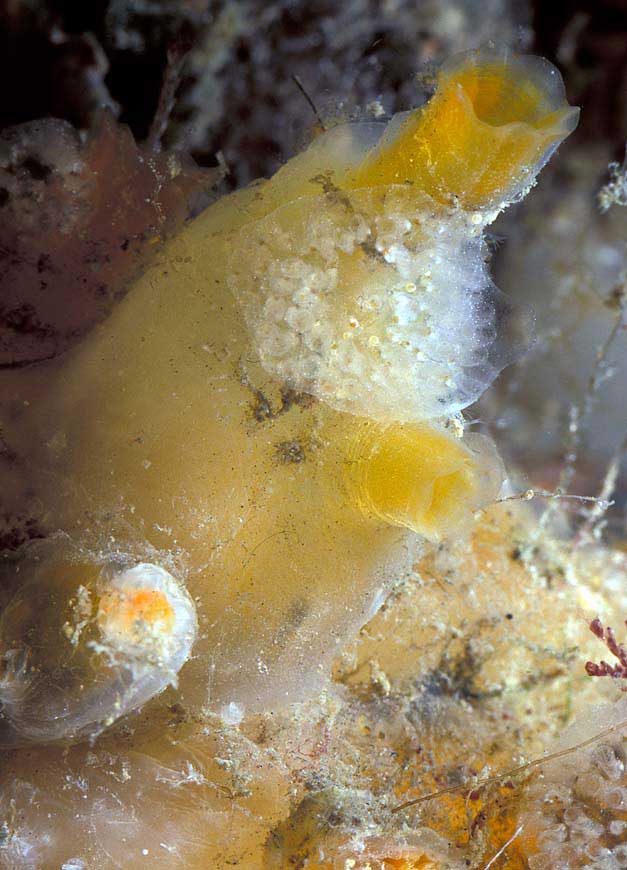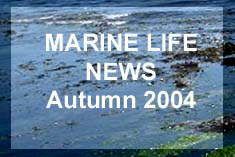
|
|
|
|
 |
|
Norwegian Marine*** |
|
L-I-N-K-S to Other Sites (Click on Text) |
|
Smart Group |
|
|
|
|
|
|

Monthly Marine News Bulletin |
|
Marine Nature Conservation Review Survey Database |
|
|
 |
|
|
|
|
|
|
|
|

SUMMER
2005
July
to September
Reports
of marine wildlife from all around the British Isles, with pollution incidents
and conservation initiatives as they affect the fauna and flora of the
NE Atlantic Ocean.
For
more reports click on the seasonal buttons below:
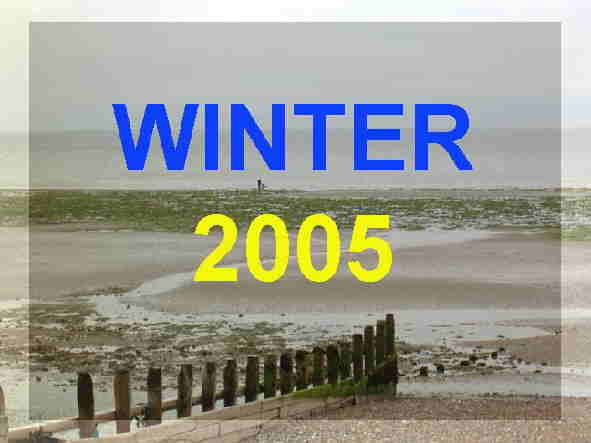 |
 |
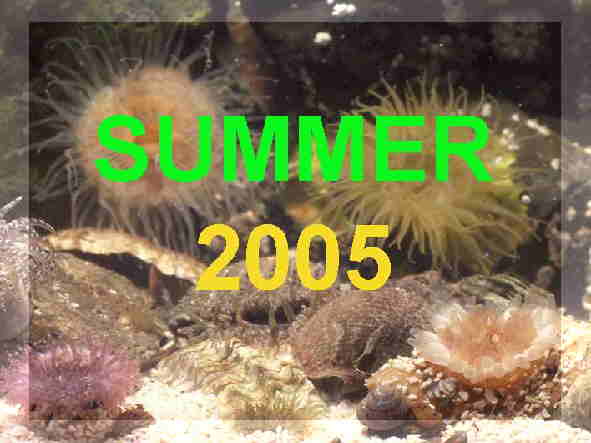 |
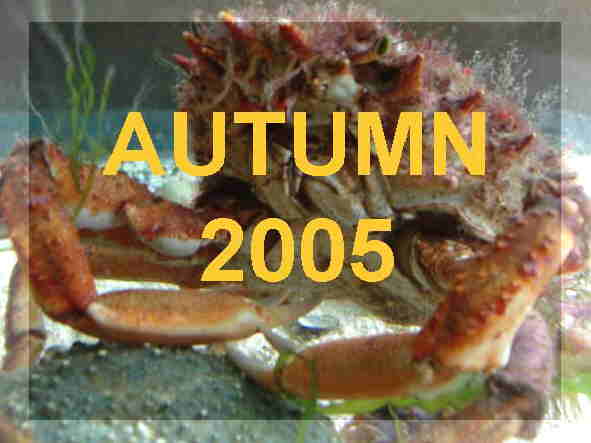 |
on Microsoft Internet Explorer (best) or Netscape
LATEST NEWS
18 September 2005
A six metre long Sperm Whale, Physeter catodon, was seen by fishermen six nautical miles off Sunderland, north-east England.Report on the Sea Watch Foundation News
15 September 2005
Two Fin Whales, Balaenoptera physalis, were sighted six miles west of the Smalls, off the west coast of PembrokeshireReport by Steve Lewis (Pembrokeshire Dive Charters) on8 September 2005
the Sea Watch Foundation News
A Giant Goby, Gobius cobitis, was seen in an isolated rock pool near Mousehole on the southern Cornish coast. This large goby is a very rare find on the south-west shores of Britain. It is now a protected species (since 1998).Report by Adam Whalley on the Cornish Wildlife Mailing List
6 September 2005
Opposite Ardtrek point, Loch Bracadale, Isle of Skye, Scotland, two Northern Bottle-nosed Whales, Hyperoodon ampullatus, were present for about an hour breaching tail slapping and generally doing an amazing arial display.Report and Identification by Peter Elford on the Skye Wildlife Pages
About thirty White-beaked Dolphins, Lagenorhyncus albirostris, were seen off the coast of Norfolk, off the end of the Nelson Head Track, just south of Horsey Gap on the east coast. Conditions were perfect, it was mirror calm and good light first thing in the morning. The pod was actively fishing in association with 4+ Porpoises, Phocoena phocoena, and a flock of Gannets about 1000 metres offshore and appeared very settled in the area. I watched them for one hour before I moved off. This represents a good record of this species so far south in the North Sea.Report by Dan Brown on the UK Cetnet (Yahoo Group)BMLSS CetaceansA marine leech, Pontobdella muricata, was identified at a fish merchants. The leech was approximately 130 mm in length, and was caught aboard a vessel fishing off the Sussex coast. The catch included numerous plaice and rays*. The relative prevalency of this leech is not known at the time of writing but the experienced fishermen had never seen one before.
* The literature records this leech as a parasite of rays.Report by Robert Clark (Sussex Sea Fisheries District Committee)Marine Life of Sussex News3 September 2005
The tiny (5 mm high) and rarely recorded sea anemone Gonactinia prolifera was discovered on Laminaria fronds hanging from the pontoons in QE II Marina, St. Peter Port, Guernsey, Channel Islands. It was probably common. This sea anemone has been only recorded in a few locations around the British coast. It reproduces by transverse division, the least common of the four described methods of asexual reproduction by British sea anemones.
Report and Photograph by Richard Lord (Guernsey)BMLSS Sea Anemones30 August 2005
Three visiting marine biologists found the invasive ascidian Corella eumyota in St. Peter Port Harbour, Guernsey, Channel Islands. This tunicate was identified by
Dr. John Bishop from Plymouth. This southern hemisphere sea-squirt was first discovered in Europe in Brittany in 2002. It has now been found in marinas along the south coast of England and also along the Channel coast of France.
Corella eumyota Goniodoris castanea Whilst accompanying the biologists in St. Peter Port Harbour, I found many Goniodoris castanea sea slugs with their spawn. They were feeding on the colonial Star Ascidian, Botryllus schlosseri, and were cryptic. On one 5 x 5 cm
square colony of Botryllus schlosseri I found six of these nudibranchs. Dr. Charles David, President of La Société Guernesiaise, tells me this species is a new record for Guernsey.Report and Photograph by Richard Lord (Guernsey)BMLSS Tunicata
on the Marine Wildlife of the North-east Atlantic Ocean Group
BMLSS Nudibranchia31 August 2005
A large metre long Sunfish, Mola mola,made the news by jumping into a small boat frisbee-style and scaring a young child at Little Haven, Pembrokeshore, south Wales.Report on the Pembrokeshre News SiteBMLSS Sunfish29 August 2005
A solitary Sperm Whale, Physeter catodon, was seen off Kinnaird Head, Fraserburgh, off the north-east Grampian coast of Scotland, in the afternoon. The animal was described as large, brown whale with a blow emerging from the front of the head without an obvious dorsal fin.Report by Tim Marshall on the Sea Watch Foundation News
23 August 2005
Bottle-nosed Dolphins, Tursiops truncatus, exist along the length of the Welsh coast and not just in Cardigan Bay as previously thought, according to the Sea Watch Foundation's National Dolphin and Whale Watch. This one of the results of the annual seawatching survey.
Two, possibly three, Humpback Whales, Megaptera novaengliae, were seen from the Cork to Swansea ferry, half way over the Irish Sea crossing, in the waters of the Celtic Deep.Whale Report by Anthony Swann on the Sea Watch Foundation News
17 August 2005
Six Fin Whales, Balaenoptera physalis, (including one juvenile), two Minke Whales Balaenoptera acutorostrata, and sixty Common Dolphins Delphinus delphis, were seen feeding 11 nautical miles west of Ramsey Island, during a Sea Watch Foundation survey.Report by Hanna Nuutila (Sea Watch Foundation)
15 August 2005
A large superpod of over one thousand Common Dolphins, Delphinus delphis, were seen off the south-west coast of Wales. The location is reported off the Pembrokeshire coast but the exact distance from the shore is not mentioned. The video film footage is by Chris Benson of the Sea Trust (the marine branch of the Wildlife Trust of South and West Wales) is from Cardigan Bay.
13 - 21 August 2005Sea Watch Foundation
National Whale and Dolphin Watch EventThe National Whale and Dolphin Watch week was an opportunity to gain a 'snapshot' view of the status and distributions of the many whales, dolphins and porpoises around the British Isles with the support of thousands of men, women and children, looking out to sea and telling us what they have seen.
Contact: Stephen Savage1 August 2005
BDMLR Images
A Leatherback Turtle, Dermochelys coriacea, was found dead off the coast of Cornwall. It was spotted by a helicopter crew which was carrying out a survey for RNAS Culdrose. The turtle, which is the largest reptile in the world, had become entangled in lobster pot buoy ropes off Botallack, near Land's End. It was towed to shore at Cape Cornwall by the Sennen Inshore Lifeboat.
BMLSS Turtles25 July 2005
68.9 kg of Common (or Blue) Skate, Dipturus batis, wings (pointed snout and grey underside) were landed on Plymouth Fish market. They were caught by the Plymouth-based beam trawler M.F.V. Joy of Ladram, which was said to have been fishing in deeper water "out to the west", the catch also included Witches and Megrims.Report by Doug Herdson (National Marine Aquarium at Plymouth)
on the Marine Wildlife of the North-east Atlantic Ocean Group
The Skate is an endangered species.
BMLSS Sharks and Rays
BMLSS Shark & Ray News16 July 2005
Up to three adult Humpback Whales, Megaptera novaengliae, were spotted 100 metres off shore at Ynys Lochtyn, near Llangrannog, Ceredigion off west Wales. It was unclear why the sea mammals, which can weigh up to 30 tonnes, had strayed into Cardigan Bay. During the summer they are more commonly found off south west Ireland and north west Scotland.
The Humpback Whale sighting was confirmed by the Sea Watch Foundation's Hanna Nuuttila.
16 July 2005
A Bluefire Jellyfish, Cyanea lamarckii, was seen in the shallows off Shoreham Beach.Report and Photograph by Carole O'Connor
This species has not been recorded recently off the Sussex coast although it has been discovered in the shallow seas around the rest of Britain. It is one of the lesser known jellyfish that frequent the seas around the British Isles, although there have been more than the usual number of reports from other shores this year.
BMLSS Jellyfish
Marine Life Reports for Sussex11 July 2005
A Flying Fish was caught off the south Devon coast by the Brixham based beam trawler, M.F.V. Magdalena and landed on the fish market.
The flying fish is probably Cheilopogon heterurus, the Atlantic Flying Fish, but it needs to be checked. Stephen Rodgers, the fishmonger who bought it on Brixham Fish market, is preserving it and will be passing it on to me to examine, and then give to collections in the Natural History Museum in London. While more than twenty flying fish have been recorded in British waters, principally in the nineteenth and first half of the twentieth centuries, we have never had definite proof of which of the three or four possible species they were. However, the half dozen caught in Denmark and Norway have all been Cheilopogon heterurus. A photograph of this fish by Richard Austin was in the 15 July Western Morning News.
I have had two or three probable sightings of flying fish in the last seven years from yachtsmen in mid-Channel who thought they saw one but could not be a 100% certain.Report by Doug Herdson (National Marine Aquarium at Plymouth)
on the Marine Wildlife of the North-east Atlantic Ocean Group
8 July 2005
A Salcombe fisherman, Graham Foale, observed a Minke Whale, Balaenoptera acutorostrata, about four miles south of Prawle Point, south Devon. It swam around his boat, Crustacean SE 35, for about five minutes whilst they were hauling pots around midday. It came within 15 metres and then slowly swam off to the east. The head could not be seen but the white markings on the pectoral fins were evident. He had seen one in the same area about ten years before.Report by Doug Herdson (National Marine Aquarium at Plymouth)
on the Marine Wildlife of the North-east Atlantic Ocean Group
4 July 2005
At least a dozen Minke Whales, Balaenoptera acutorostrata, were seen from the CRRU research vessel in the outer southern Moray Firth (NE Scotland). At one location, we had three Minke Whales around the boat at the same time (two adults and a young calf), and they were lunge feeding, to the left and to the right of us, as the leviathans struck at the numerous bait balls of sandeels being concentrated at the surface by corralling mackerel from below and hoards of feeding birds from above!
Previous Report BMLSS Cetaceans28 June - July 2005
An algal bloom of the planktonic dinoflagellate Karenia mikimotoi has developed in the Atlantic Ocean and been blown inshore and around the coasts and into the loughs of north-west Ireland. This microscopic organism is present in such huge numbers that underwater the sea actually looks green and the visibility is reduced to a few metres. It releases toxic substances called gymnocins into the sea and compounded by the deoxygenation caused by the dying plankton, the overall result has been a mass mortality of the sessile and slow moving organisms like starfish, sea urchins, benthic (bottom-dwelling) animals, scallops and other molluscs, worms and even sea anemones. In the enclosed loughs and in very shallow water, the effects are even worse, with flatfish and rock pool fish succumbing the effect of the toxins and anoxic conditions. Dead creatures litter the sea bed providing food for any crabs that have survived.
Dead Animals in Killary Bay
The first is a sipunculid Golfingia vulgaris* and the second a sea cucumber, Thy fusus, that have succumbed to the effects of the algal bloom.
(* ID by Richard Lord)Fish farms have been located in some of the loughs and their stock of molluscs and fish can be killed by these naturally occurring algal blooms.
Original Report and Photographs by Rohan Holt
5 July 2005
A Beluga, (=White Whale), Delphinapterus leucas, was spotted from an aeroplane east of Westray in Orkney. It as pure white, about five to six metres long, and surfaced five or six times fairly rapidly.Report by Ian Muir (vet) on the Sea Watch Foundation News
3 July 2005
I dived Killary Harbour (a long enclosed sea lough) with Dr Joanne Porter from Aberystwyth University, only to find that all the brittlestars in what was an extensive bed; large molluscs including whelks and scallops; all starfish, all fish (everything from Blennies, Gobies, Butterfish, flatfish etc) and many of the infaunal species - (worms, priapulids, sea cucumbers), were either dead and rotting, or gaping and unresponsive. The only animals that seemed to be hanging on were the Common Hermit Crabs, Pagurus bernhardus, and the Organ-pipe Worm, Serpula vermicularis, which were still extending their tentacles from their calcareous tubes but retracting them quickly when we approached. On another dive in the upper reaches of Kilkieren Bay a 'population' of the Fireworks Anemone, Pachycerianthus multiplicatus, were notably moribund and would not retract their tentacles nor retreat into their tubes when disturbed.Report and Photographs by Rohan HoltMarine Institute Web Site Report
New Publication:
ISBN 0-9522831-5-8 Available from:
New Publications
Links for News Reports:
Helford (Cornwall) Marine Conservation Area
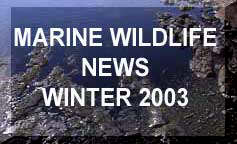 |
 |
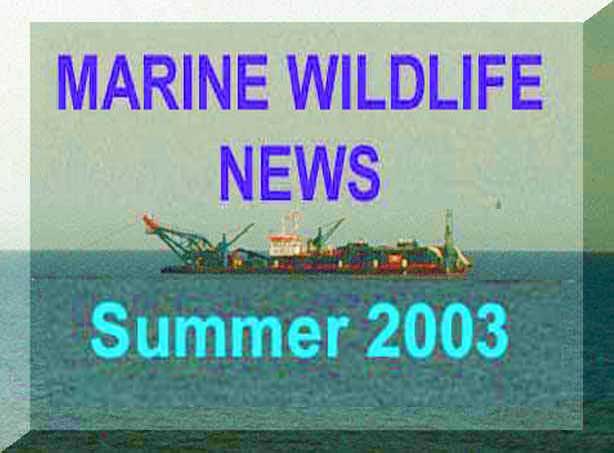 |
 |
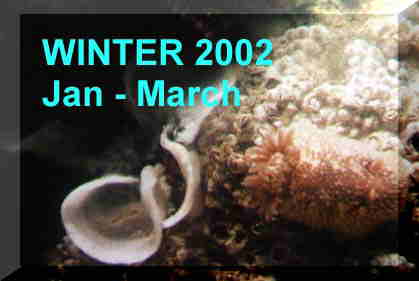 |
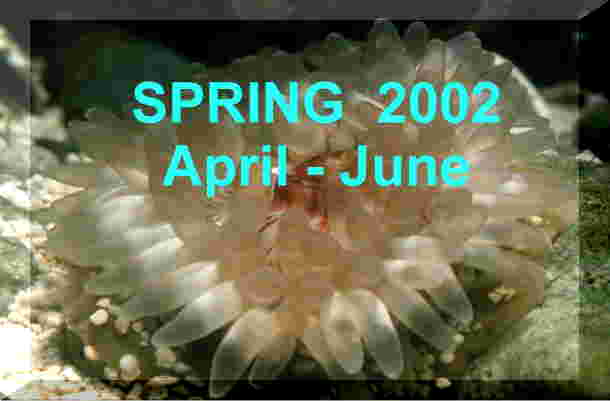 |
 |
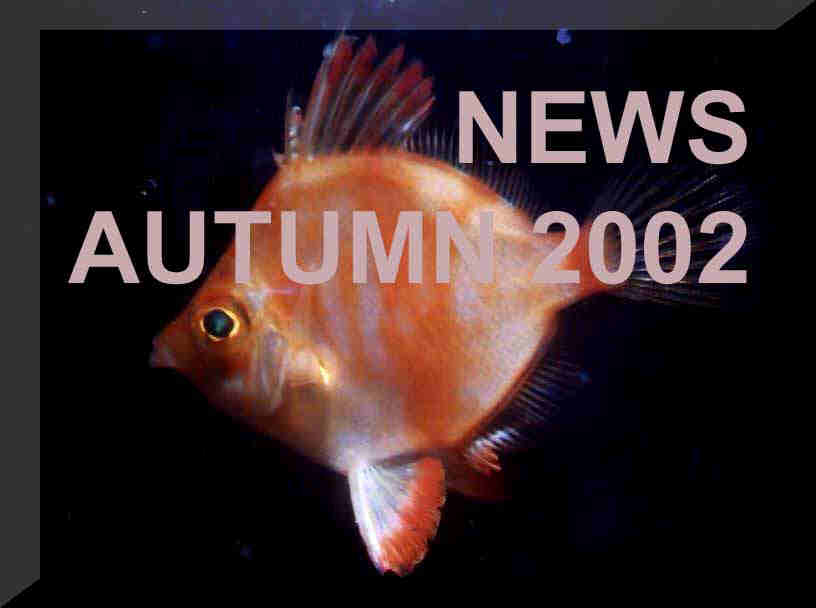 |
FOR EARLIER REPORTS CLICK ON THE BUTTON BELOW

The Marine Wildlife of the NE Atlantic Forum
PLEASE JOIN

MARINE WILDLIFE of the NE ATLANTIC EFORUM PAGE (LINK TO)
Nature Diaries [ Join Now | Ring Hub | Random | << Prev | Next >> ]
British
Marine Life Study Society
|
Use these links if your are familiar with the scientific classifications of marine life |
The BMLSS (England) site commenced on 1 January 1997
|
|
 |
 |
Andy Horton, Webmaster
|
|
|
|
|
|
Membership Form |
News 2003 News 2010 |

